3.5mm or 2.5mm?
Here are a few helpful tips for determining the correct size jack for your shoulder (paddle) microphone.
- Your shoulder mic is a 3.5MM if it can accept an AUX or Auxiliary cord used for connecting a music source to a car.
- Older style wired headphones/ear buds are also 3.5MM.
-
Your computer or monitor (if it has speakers) likely has 1-2 round ports for sound and/ or mic its usually green or pink, both are 3.5MM.
-
3.5mm Headphone Jack:
- Size: The 3.5mm jack is one of the most common connectors worldwide. It’s the size of a standard headphone plug.
- Usage: You’ll find it in most stereo headphones or earbuds that provide stereo sound.
- History: It was first introduced in the 19th century and has become a standard for audio devices.
- Advantages: Widely compatible, used in smartphones, laptops, and various audio equipment.
- Disadvantages: None significant.
- Example: If your headphone plug fits comfortably into the port, it’s likely a 3.5mm jack.
-
2.5mm Headphone Jack:
- Size: The 2.5mm jack is smaller than the 3.5mm version.
- Usage: It’s also commonly used in different devices but stands as the older version of the 3.5mm jack.
- Advantages: Compact, suitable for specific applications.
- Disadvantages: Less common nowadays due to the prevalence of 3.5mm jacks.
- Example: If your headphone plug is noticeably smaller than standard headphone plugs, it’s likely a 2.5mm jack.
-
Remember, the 3.5mm jack is more widespread, while the 2.5mm jack is less common. If you’re unsure, compare the size of your headphone plug to the standard 3.5mm size to determine which type of port you have.
- Your shoulder mic is a 3.5MM if it can accept an AUX or Auxiliary cord used for connecting a music source to a car.
- Older style wired headphones/ear buds are also 3.5MM.
- Your computer or monitor (if it has speakers) likely has 1-2 round ports for sound and/ or mic its usually green and/ or pink, both are 3.5MM.
Listen Up: Protecting your ears for a sound future
Preventing hearing loss is crucial for maintaining good auditory health throughout your life.
Here are some tips to help you protect your hearing:
Limit exposure to loud noises:Minimize your exposure to loud noises, both at work and during leisure activities.
Use Ear ProtectionWhen you anticipate exposure to loud noises, such as at concerts, sporting events, or when using power tools or machinery, wear appropriate hearing protection.
Take Listening BreaksGive your ears regular breaks from exposure to loud sounds.
Know the Safe Noise LevelsFamiliarize yourself with safe noise levels to make informed decisions about protecting your hearing.
Get Regular Hearing Check-upsSchedule regular hearing evaluations with a qualified audiologist, especially if you are exposed to high noise levels.
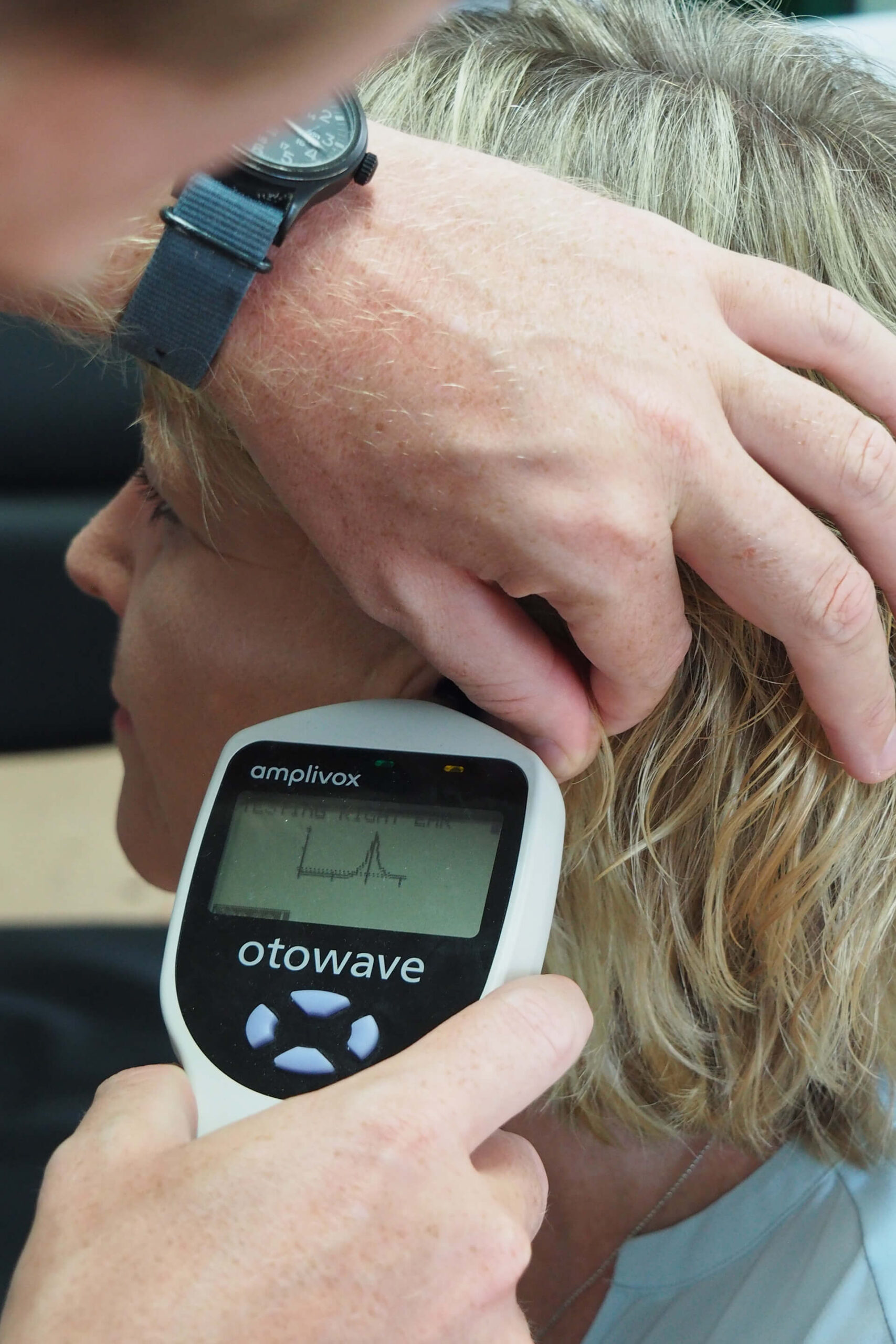
Ear Tip Sizing Guide
Stock communications ear tips come in three (3) sizes: small, medium and large. They are also ear specific for left ears or right ears. When ordering ear tips, you must specify what size and which side.
The vast majority of people order a medium size ear tip. Having said this, it is good to recognize what size stock ear tip would fit well for each individual’s ear. The criteria for a good fit is based on ear geometry.
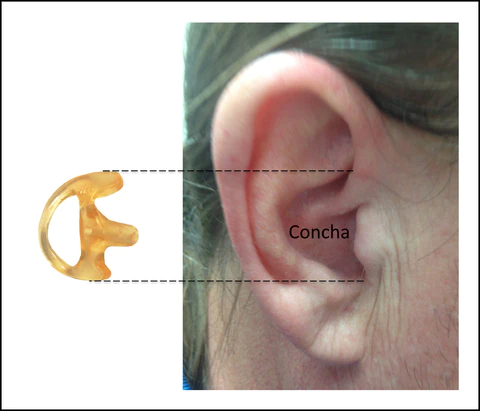
In the picture, you can see the “concha” region of an ear. To properly fit a stock communications ear tip, look at the height of the concha. Medium size stock communications ear tips are typically around 1″ in height, Smaller ears have a concha that is a little shorter and larger ears have a concha that is a little taller. While it is not critical to precisely measure each ear, this description is a basic guide to assist you with the ordering process. As reference, a US quarter is slightly under 1″ in diameter.
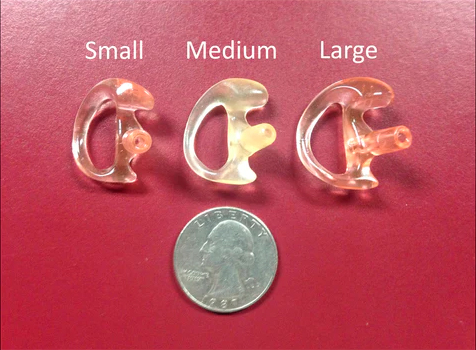
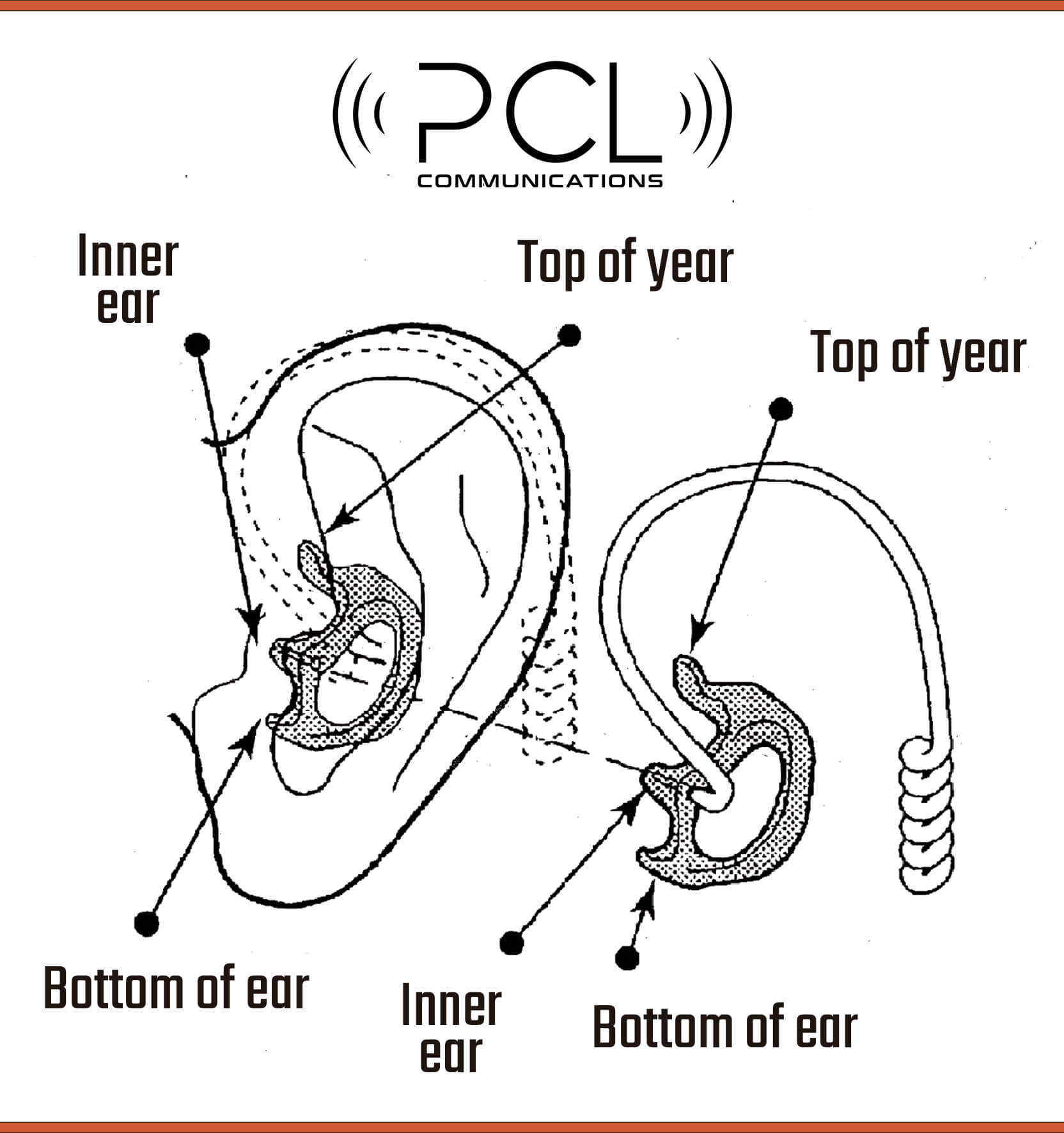
Ear Tip Insertion & Care
- Place the bottom portion of the ear tip into the bottom of ear.
- Push ear tip inward with the top of the insert pointing upward.
- With the bottom in the ear, rotate the ear tip into place.
For hygienic purposes, opened packages will not be accepted for return.
Ear tip should be cleaned periodically with soap and water.
Dry inner ear (canal) portion with cotton swab. Wipe ear tip with tissue after each use.
Why choose SoundWaves® Wires?
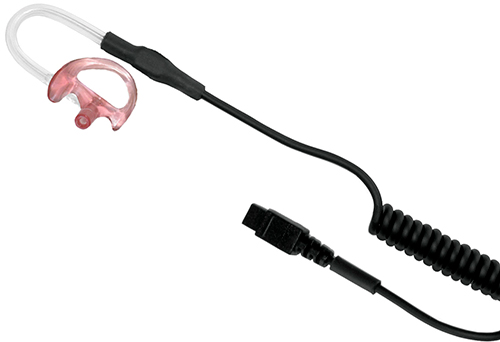
- Hearing aid quality speaker (Higher volume, better clarity)
- Short sound travel path – 3 inches
- No Condensation issues
- Super elastic tubing resists breakdown
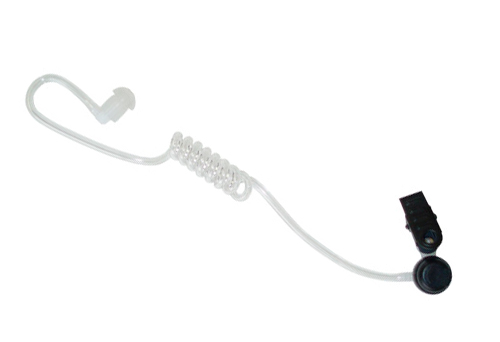
- Standard quality speaker
- Long sound travel path – 19 inches
- Prone to Condensation that inhibits sound travel
- Hollow coil tube has a tendency to harden and crack
Quick Disconnect Connector
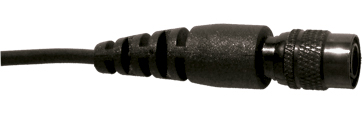
Besides ensuring your comm gear investments go the longest way, other benefits to the Quick Disconnect System
- Effortless Convenience at Your Fingertips: Charge your radios without the hassle of unscrewing adapters whenever you need to remove it for settings, programming, or charging.
- Simplify connections: Gearing up or removing gear is easy with the slim Quick Disconnect connector.
- Versatile Connectivity: Allows you to use multiple pieces of comm gear on a single radio adapter.

